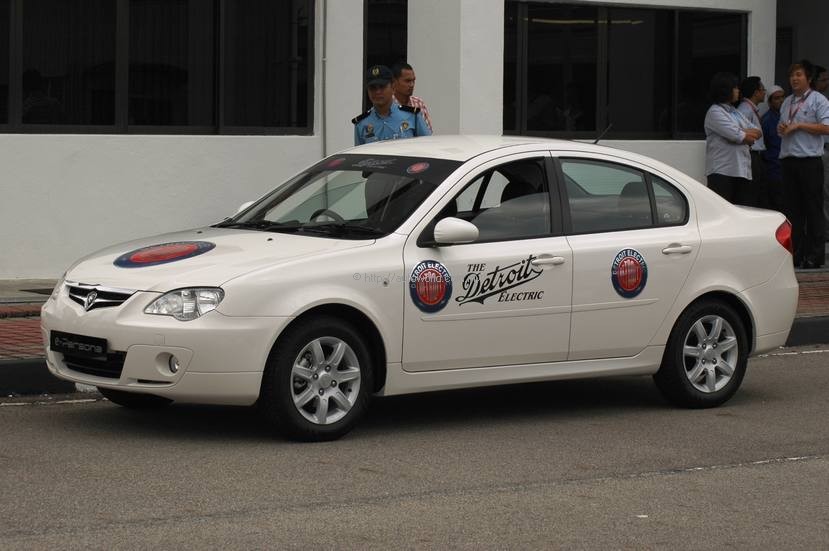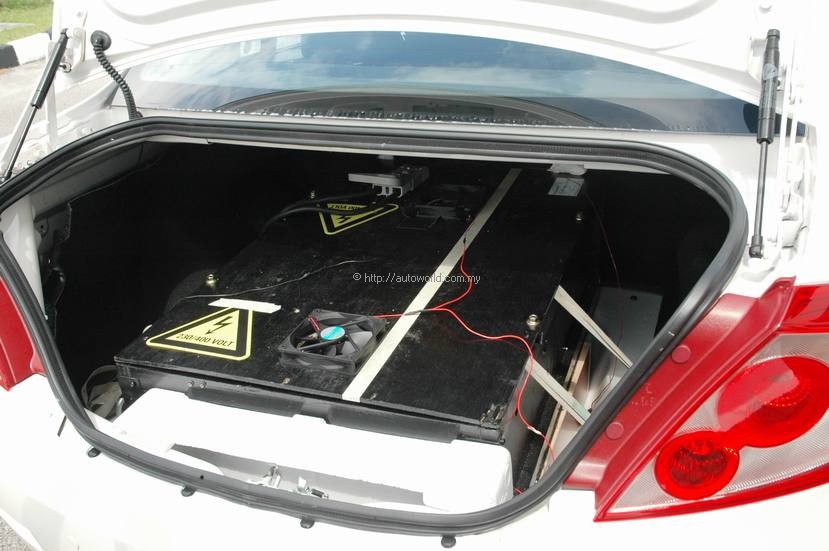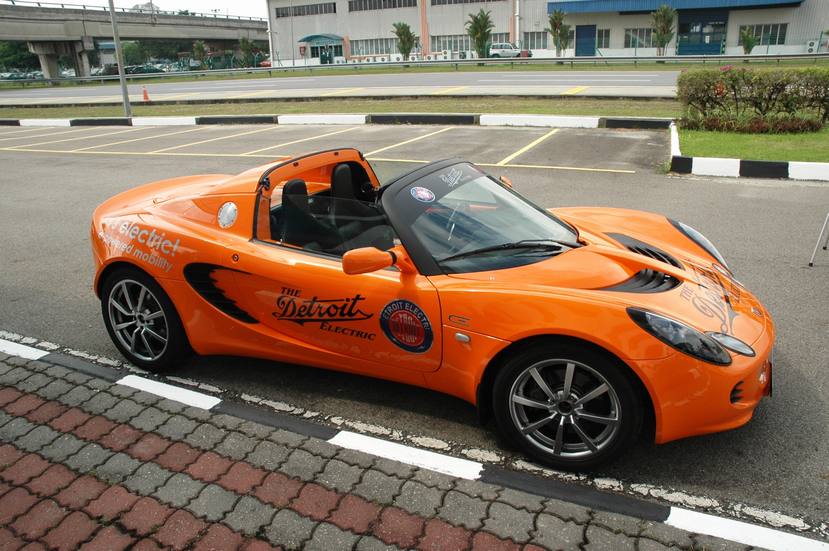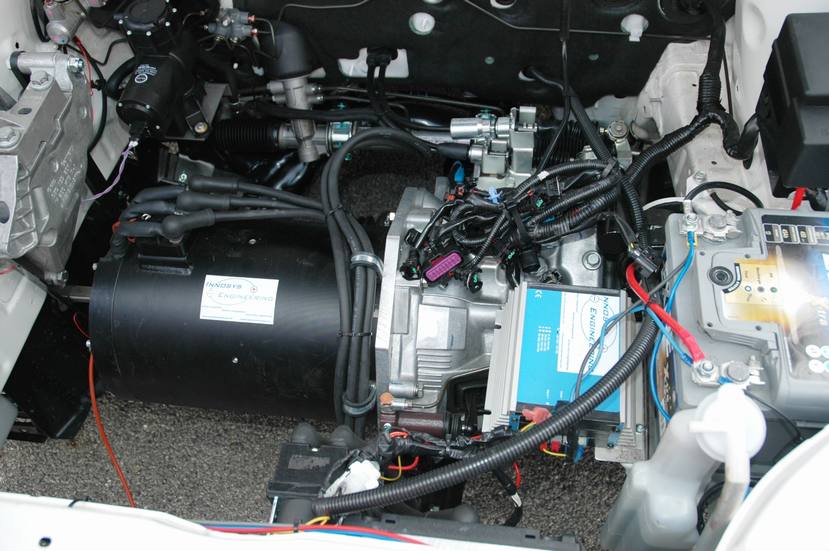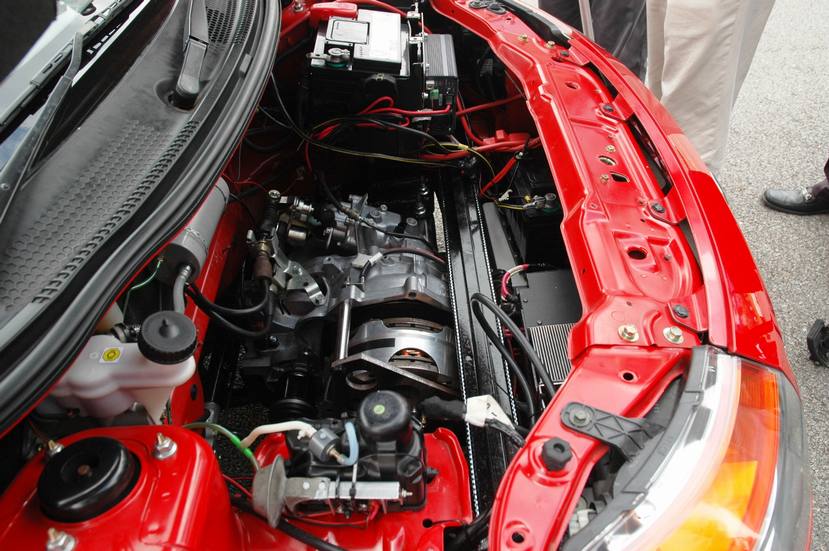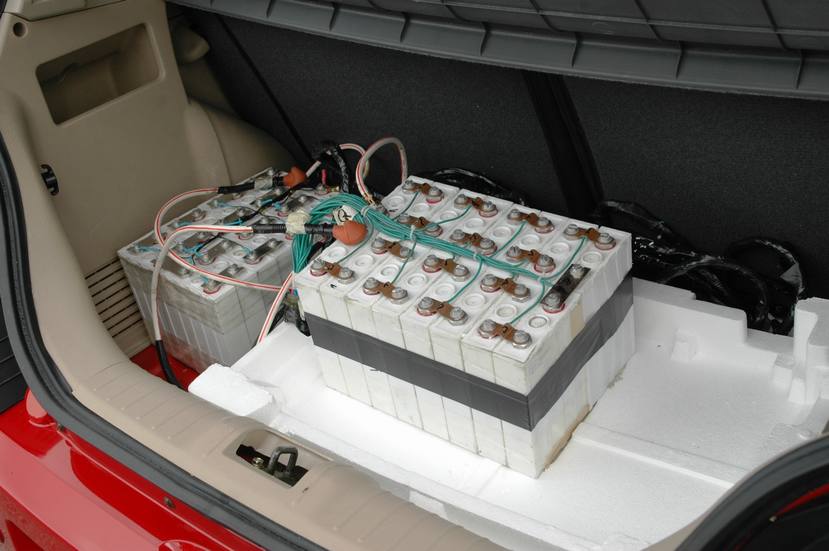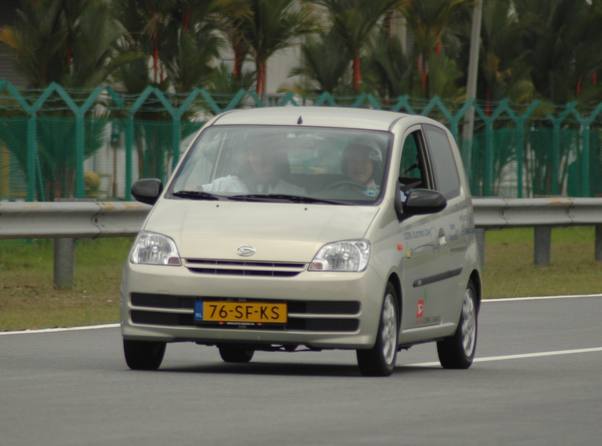Proton Evaluating Electric Car
Shah Alam, 3 September 2008 – We had an interesting day yesterday at the Proton Test Track in Shah Alam, having a look at the latest development in the auto industry in Malaysia, the electricity-powered car.
Hosted by Proton, the presentation came from Detroit Electric Chairman and CEO, Mr. Albert Lam. According to a statement issued by Lam, Detroit Electric plans to roll out affordable electric vehicles worldwide by end 2009.
A little aside on Detroit Electric; the company, according to Lam, existed a hundred years ago, made electric cars, and sold them, but went ‘bust’ in 1938. Lam bought over the company in 2007, and it works with technology partners to develop the Detroit Electric system.
There is a slight difference though, in the way Detroit Electric is going about it – instead of the conventional method of developing an automobile with an electric motor drive system, the DE way is to ‘license’ manufacturers and work with them on an existing platform or model to replace the conventional engine with an electric motor.
Lam, who told the press that he was the ex-CEO of Lotus, stated that he is currently speaking to a few car makers, and that negotiations with Proton is on a very ‘preliminary’ basis, and nothing concrete has been committed yet, although we did see a Lotus, a Persona and a Savvy retrofitted with electric motor systems, and the press were invited to drive or sit in them to get a feel of what an electric car is all about. Interestingly, there was also a foreign-registered Daihatsu that looked very much like a Perodua Viva also kitted out with an electric motor drive system.
Lam also brought along his local partners and his technical team to answer questions from the press. According to his estimation, a Proton Gen 2 costing about RM60k would cost about RM80k in electric form; consider of course that the engine would be replaced by a motor, and a whole bunch of batteries would have to be placed somewhere in the car.
The test cars we saw were retrofitted, but if Proton were to go into a serious business venture with Detroit Electric, some modifications would be required to place the battery banks is a location other than the boot, and it must be is a place that is secure and safe. According to Lam, the Detroit Electric system uses lithium ion batteries, very much the same as those found in handphones. I must say that battery technology has progressed in leaps and bounds in the last twenty years, and they are much smaller and lighter today. Prices are still high, though, and I would want to know the replacement cost of the battery bank, in case of failure or accident damage. According to Lam, the range of the battery pack in the test cars are good for up to 300 km, (depending on how you drive), but keep in mind that whilst you can drive a car at full power down to the last drop, batteries start to taper off from the moment you start. It would be interesting to see how the test car goes when you are about two thirds down on power.
The industry majors are currently more engrossed with hydrogen fuel cell cars, and although the cost is still very high, there are hopefuls who think that costs can come down with mass production and new materials. The hydrogen fuel cell car is still a long way from seeing fruit, as it also requires a very expensive infrastructure of hydrogen refilling stations before it can be commercially viable. In this respect, electric cars have the advantage, as it is relatively easier to set up electricity charging stations. The limited range of the electric car is the one drawback, but Lam says that it is possible to have ‘quick’ charges of about 10 minutes.
Checking with Proton on its stand in the matter, we received a statement that said, “Proton has been requested by the Malaysian Government to explore the possibilities of producing an electric car for the masses.
Currently, we are evaluating and studying the technology but it is still too early for us to comment on the progress.”
The cautious stand is understandable; the technology, although not new, has certain limitations. If Proton has strategic partnerships with other parties, the parties have to be vetted, as we cannot afford any more fiascos and failed products; after all, it is the public’s money.





